The King of Fighters '98 – SNK Dream Match
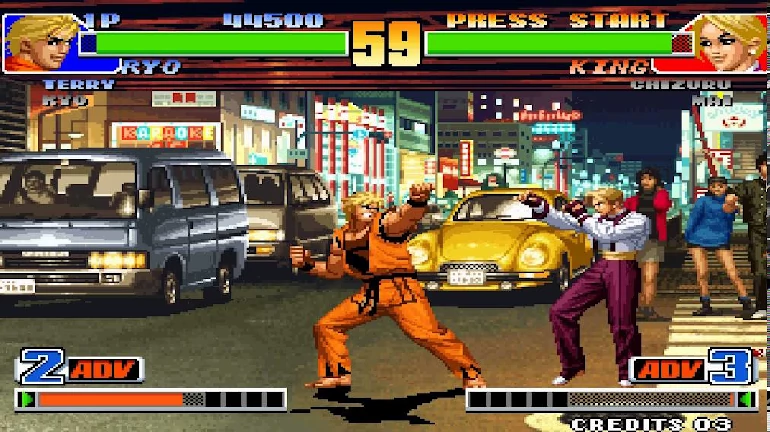
The King of Fighters saga didn’t take long to become Neo-Geo’s flagship franchise, surpassing even Fatal Fury. The original idea was incredibly appealing: create a tournament featuring some of SNK’s most charismatic characters, giving a fresh twist to this often-overused genre with a new 3v3 team battle system.
As you probably know, the gameplay involved forming your own team (though in the first tournament, the teams were already predefined, with each squad representing a country—like the Mexican flag for the Art of Fighting team, hehe). You’d pick the order and then face off against the first fighter on the opposing team.
If you won, you’d move on to the next fighter with whatever health you had left. If you lost, the opposite happened—your next teammate had to step in and try to clean up the mess. This went on until one team was completely wiped out, with the winning team advancing to the next round until they reached the final boss (or bosses, depending on the year).
With that said, let’s focus on this game—considered by many fans to be the best KOF ever made.
About the Game
The previous chapter left a lot of unanswered questions. The story that had guided Kyo, Iori, and the others for three years had come to an end. The so-called "Orochi Saga" concluded spectacularly in King of Fighters '97, leaving Yashiro, Chris, and Shermie’s team as "martyrs" for their cause, Kyo and Iori as missing heroes, and Kagura as the true savior. And now… what?
Well, SNK took a risky bet—one that paid off. They decided to forget about storylines, complications, and everything else, instead creating a Dream Match—a fictional tournament where every character could participate, from forgotten ones like the USA Team (though their return wasn’t exactly cause for celebration) to even deceased fighters like the Orochi Team. The result couldn’t have been better: 38 fighters (plus hidden ones) gathered in the greatest fighting game ever made up to that point. But they didn’t stop there.
The beauty of the stages, the spectacle of the characters and their moves, the small details and nods to longtime fans, the sheer number of techniques—but above all, unmatched gameplay and fun. That’s what defines KOF '98.
After SNK’s signature flashy animated intro, the adventure begins. As mentioned, you have 38 fighters at your disposal to build your dream team (though poor Shingo, as usual, has no friends to form a preset squad). Just like in KOF '97, there are two gameplay modes—EXTRA and ADVANCED—which differ in how they handle energy bars for special moves. Once everything’s set, you’ll battle teams from around the world until you face the final enemy: the ever-present Rugal, in his evil form.
Behind this simple premise lies hours and hours of fun. Each character has their own personality, completely unique moves, strengths, and weaknesses. The possibilities multiply exponentially in team battles, where both the fighters and their order matter, depending on the rival team’s lineup.
For example, a fighter might be great against heavyweights but struggle against faster opponents. You have to pay attention to the smallest details. Add in the sheer number of special moves per character—including super attacks—and the possibilities become nearly endless.
And if the tournament mode is fun, playing versus matches with a friend is even better. Set the game to versus mode, let the machine randomly assign teams to each player, and you’ve got hours of entertainment. A highly recommended experience.
As mentioned earlier, the game is a technical masterpiece, one of the best in pure 2D. The dark, moody stages of KOF '97 gave way to the most vibrant and colorful in the series, including the Alhambra of Granada. Bravo.
Fun little details stand out, like the pre-fight greetings between characters who supposedly know each other—like those from the same previous game—and the hidden SNK characters that, as always, can be seen wandering the backgrounds. The character sprites, as we’re used to, are well-defined and animated, though some have remained almost unchanged since the 1994 edition.
The music also shines on its own, especially when a character appears with their own theme—like Terry Bogard or the Art of Fighting crew. A sublime touch.
As for gameplay, there’s not much left to say. You’ll find characters easy enough for beginners and others with complex but highly effective moves for experts. This gives the game lasting appeal, but no matter which team you pick, you’ll have a blast. There’s even an incentive to beat the game with preset teams to unlock their "ending images"—which, by the way, many custom teams also have, like Ralf/Mary/Lucky or Takuma/Kim/Saishu, among others.
At Its Release (1998)
In 1998, it was recognized for what it was: A magnificent 2D fighting game that earned its place as the #1 in the genre—a must-play for any gaming fan at least once in their life (and it’s still easy to find in arcades today). Universally praised as Neo-Geo’s best game up to that point, it received nothing but positive reviews. At the height of the 3D polygon craze, it proved that games are meant to be fun, and that sprites still had a lot to teach about how to do it right.
Beyond what’s already been said, critics also highlighted its well-balanced difficulty—not as punishing as earlier entries, nor as easy as KOF '97. For all these reasons, it was already being called a classic upon release.
THE BEST: Technically outstanding, but the fun it delivers is unmatched.
THE WORST: No story mode. A shame, especially after KOF '97 left such a strong impression.
Today
Sadly, after this chapter, the series declined. SNK’s closure and the later KOF games developed by Eolith didn’t help. The system changed, shifting to 4-member teams before disastrously reverting to 3. Hopefully, future installments will restore King of Fighters to its former glory. Until then, this remains the most recommended entry.
Time has barely touched it—it’s still as appealing now as it was back then. So, as they say, this is a game everyone should try. Play it once, and you’ll keep coming back. Pure addiction, gameplay, and fun.
STILL HOLDS UP: The fun. It hasn’t lost a bit.
WHAT TIME HAS CHANGED: Technically, it’s been surpassed by other 2D games, especially Capcom’s crossovers.
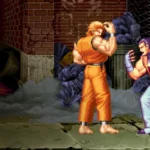 Art of Fighting on Neo Geo – Tiger & Dragon
Art of Fighting on Neo Geo – Tiger & Dragon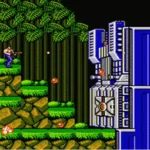 6 Games That Will Drive You Crazy...
6 Games That Will Drive You Crazy...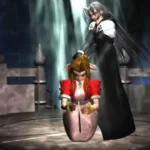 The 4 Most Epic Moments in Video Games
The 4 Most Epic Moments in Video Games The 7 Most Charismatic Supporting Characters in Video Games
The 7 Most Charismatic Supporting Characters in Video Games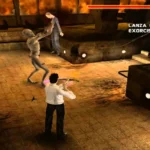 Constantine: From Earth to Hell on Xbox
Constantine: From Earth to Hell on Xbox

Leave a Reply